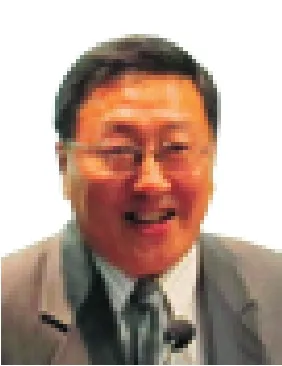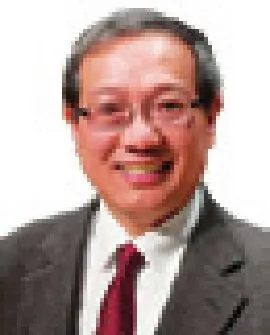Brain Circulation
2012-10-14
Brain Circulation
O fficials and scholars from China and the United States discussed collaborating on higher education during the 15th Edgar Snow Symposium held at Peking University in October, stressing that educational cooperation should be a two-way street. Excerpts of their speeches follow:

Shi Xiaoguang

Yang Meng
Yang M eng, Deputy Secretary General of the China Education Association for International Exchange: The Outline of China’s National Plan for Medium- and Longterm Education Reform and Development(2010-20) requires us to expand international exchanges and cooperation in the field of education. In the early 1980s, many Chinese students went abroad to study and didn’t come back after graduation, bringing a so-called “brain drain” to the country. However, at the beginning of the 21st century, there were more job opportunities in fast-developing China, and more Chinese students overseas are w illing to return to China, in what is now coined the “brain gain.” Today, not only are Chinese students going abroad to study,but also more foreign students are coming to China to learn the Chinese language and culture,promoting “brain circulation.”
China’s Ministry of Education has signed agreements w ith 39 countries to recognize each other’s academic degrees and credentials.Chinese students are sent to over 100 countries and regions to study, and students from 194 countries and regions come to China to study.Currently there are 1,600 institutions jointly run by Chinese and foreign higher education institutions. We encourage international exchanges not only between institutions above the college level but also between high schools and even primary schools. Our goal by 2020 is to have 100,000 foreign students studying in China.
Currently there are more Chinese students studying in the United States than U.S. students studying in China. The reason is that the United States has more high-quality higher education institutions than China. In addition,Chinese students started to learn English at primary school. They know much more about the United States than U.S. students know about China. According to my work experience, it is hard to encourage U.S. students to leave home and come to China to study. In order to attract more U.S. students, I think we should improve our curriculum to cater to U.S.students’ needs.
Shi Xiaoguang, an associate professor w ith the Graduate School of Education at Peking University: Why does China have the largest number of students studying overseas?An important reason is that we don’t have enough high-quality educational institutions. In order to meet Chinese students’ needs, we should have 200 research universities. However, at present there are only around 40 research universities in China. To make up for the lack of high-quality educational resources in China, we need to introduce resources from other countries, especially the United States.
In the past few decades, cooperation in the field of higher education between China and the United States has born rich fruit. For example,in 1986, the Johns Hopkins-Nanjing University Center for Chinese and American Studies was established in Nanjing. In 2000, a delegation led by the then U.S. secretary of education visited China and the two countries signed an agreement on education cooperation. During his visit to China in 2010, U.S. President Barack Obama promised to send 100,000 American students to study in Chinese universities. In addition, a number of research centers have been established in China by the two countries in recent years such as the Sino-U.S. Institute for University Design established in 2006, the U.S.-China Clean Energy Research Center in 2009 and the Stanford Center at Peking University in 2012.
Why should Chinese universities collaborate w ith U.S. universities? I think Chinese universities, especially those at the provincial level, lack educational resources. Therefore,they need foreign investment to improve their quality of education. In addition, Chinese universities need to improve their teaching methods by incorporating innovative ideas from the U.S.

Teng-Kee Tan
No t on ly do Ch inese studen ts need to stud y in the Un ited States, bu t U.S. studen ts shou ld a lso com e to Ch ina to learn the Ch inese language and cu ltu re
Teng-Kee Tan, Dean of the Hen ry W. Bloch School of M anagement at the University of M issouri—Kansas City: I am concerned with the sustainability factor in our collaboration. We always talk about top institutions like Tsinghua and Peking universities,but the majority of Chinese students cannot get access to such elite universities. I am concerned about people living in the villages or in the second- and third-tier cities in China.
I think that teacher training is the way to resolve the problem. I know that the Chinese Government is encouraging about 5 percent of its students to study abroad, but still 95 percent of students w ill have no access to our education. So teacher training might be an effective way to address the lack of high-quality educational institutions in China.
I remember as a child I read the history of China. During the Tang Dynasty (618-907) and the Northern Song Dynasty (960-1127), top Korean and Japanese talent were sent to China to study the arts, literature, law and technology because China topped the world in science and technology at the time. A lthough at present Chinese students studying abroad outnumber foreign students studying in China, I think it is equally important for us to learn from China as it is for Chinese students to learn from us. China has things we don’t really know about in the West. For example, we are completely ignorant of Chinese medicine and the integration of Chinese and Western medicine.
As the dean of the business school, I w ill tell you that my students are extremely interested in how multinational firms like Coca-Cola, General Motors and BMW differ in management and people strategy when conducting business in China. We know that General M otors sells more cars in China than they do in America. But not many people know how it recreates such a success in China. So if China’s universities would package the type of know ledge that we are ignorant about, you w ill attract more students from across the world to come to China to learn.

Leo Morton
Leo M o r ton, Chan cello r o f the University of M issou ri-Kansas City(UM KC): UMKC is trying to stimulate“brain circulation.” Last year, we had 68 students study in China, up significantly over prior years. At this point, we have over 300 students from China on our campus, which is up from only about 200 a couple of years ago. The UMKC academ ic program overseas provides scholarship for UMKC students studying in China and Chinese students studying at UMKC. The scholarship is offered by a UMKC professor to support the U.S.-China partnership in education. UMKC would like to attract 300 more students from China. We have very specific areas. We would like to see them be part, primarily engineering, science and management.
We would like to broaden our programs by reaching younger students and increasing participation among community colleges. The U.S.-China Fulbright Program has included more than 3,000 American and Chinese students and scholars today. The Chinese Government is strongly supporting this initiative and has already comm itted 10,000 scholarships for American high school and college students, teachers and school administrators to study in China. This is strong indication that we need to learn in both directions. This initiative seems to prepare the next generation of American experts on China,w ho w ill be charged w ith managing and grow ing political, economic and cultural ties between the two countries.
The real d river is going to be the American businesses which need to be more global. They will request American students to receive the global education that w ill allow them to advance and be successful. We also need to focus on the sciences. There is a lot the United States can learn from China in this area. We are seeking to strengthen bilateral science and technology relationships using the people-to-people versus the government-togovernment approach here. We have offices at the provincial education departments of Jiangsu and Fujian provinces to recruit the best students to come to study at the UMKC.We also have MOUs w ith Nanjing University and Xiamen University for graduate programs. We also started a Youth Scientist Forum that promotes interactions between young U.S. and Chinese researchers using exchange programs and innovated technological platforms. It facilitates discussion on topics including research integrity, scientific responsibility and peer review processes.
I believe our future together looks bright.I believe we w ill deepen our relationships and understanding through these efforts.
